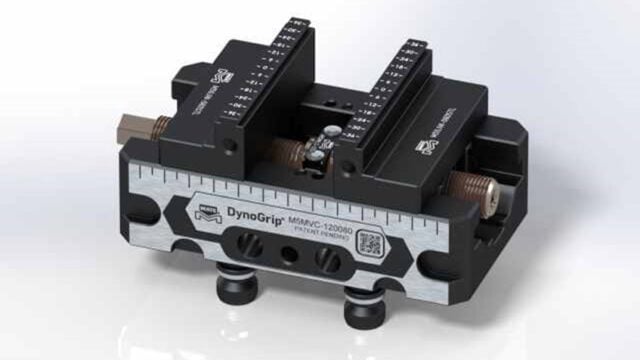
Leader extended zero-point offering with Mate Precision Technologies
Following a recent partnership agreement, the full range of Mate Precision Technologies’ high precision zero-point fixturing…
Workholding and manufacturing ancillary specialist, Leader Chuck Systems, recently discussed the merits of diaphragm chucking…
Sometimes the best way to get an answer is to simply ask a question, such as “what will using a diaphragm chuck add to my operation?” The following Bullet points ask all of the questions that might occur if you’re considering moving to Diaphragm chucking:
• Why hard turn–why not grind?
A diaphragm chuck can be used in either a CNC turning centre or a grinding machine. It is the ideal workholding for finishing hardened parts. There are huge savings to be taken advantage of in both equipment and process between grinding and hard turning operations. Standard CNC turning centres are inexpensive compared to CNC grinding machines. Hard turning cycle times are faster than grinding operations. There have been great advances in turning inserts that can provide the fine micro finish needed for hard turning. Thus, there is an increase in productivity with a corresponding decrease in cost when using a diaphragm chuck.
• Why is a diaphragm chuck preferred over a standard three-jaw or pull-down chuck for gear turning?
The two major advantages of a diaphragm chuck are accuracy and consistency of the clamping force. Since there are no sliding parts in the diaphragm chuck, the accuracy is directly related to the consistent deformation of the diaphragm. This chuck relies completely on the diaphragm for opening and closing of the jaws. In a standard chuck there is a compound tolerance accumulation between the wedge, master jaws, and the chuck body. The centring accuracy of the diaphragm chuck is very important to gear clamping. The diaphragm chuck maintains the concentric relationship between the pitch line of the tooth form and the machined centre bore. The diaphragm creates another great advantage in maintaining consistent clamping force. The absence of sliding parts means diaphragm chucks need no lubrication. Standard chucks gradually lose gripping force between lubrications. The grip force for standard chucks is constantly changing, creating varying dynamic conditions. Diaphragm chucks eliminate this problem by relying on the elasticity of the diaphragm.
• How long will the diaphragm last?
Clamping is based on the deformation of the diaphragm. The diaphragm flexes with the “push and pull” that opens and clamps the jaws. There are no sliding parts in the actuation of this chuck, and minimal wear. This also eliminates the need for maintenance. A special machining process is used to manufacture the diaphragm, which creates a very long service life for this component. The diaphragm will maintain a life of between 800,000 to 1 million actuations. Opening the chuck always places greater pressure on the diaphragm than does the closing force. The closing force is not limited to the spring action of the diaphragm as clamping force may be increased and regulated by applying draw-pull from the hydraulic cylinder, as on a standard power chuck.
• How quickly can the chuck be changed?
The workpiece specific clamping set – comprising jaws, workpiece location stops, maybe pneumatic part detection and coolant or air blast for clearing chips – can be changed in about one minute. The jaws and the part locator can be changed in about three minutes. There is an initial set-up of the chuck required to “dial in” the jaws with a master gear. Once this is accomplished upon installation of the chuck it will never need to be repeated.
• Why actuate the chuck with an external cylinder?
Most diaphragm chucks are self-contained front actuated, using a pneumatic cylinder for opening the chuck and releasing the workpiece. Clamping is accomplished by the spring action of the diaphragm. Among the features of the diaphragm chuck are relatively low gripping force and very small jaw movement. When using an external cylinder, it is a simple matter to apply a slight extra pull on the diaphragm to increase the gripping force when, for example, turning very hard materials where high tool forces are applied against the workpiece. This additional gripping force is not possible when using a self-contained chuck.
Be first to see all the updates from MTDCNC
Our newsletters frequency varies dependant on content
All the latest deals from the industry feature on our newsletters